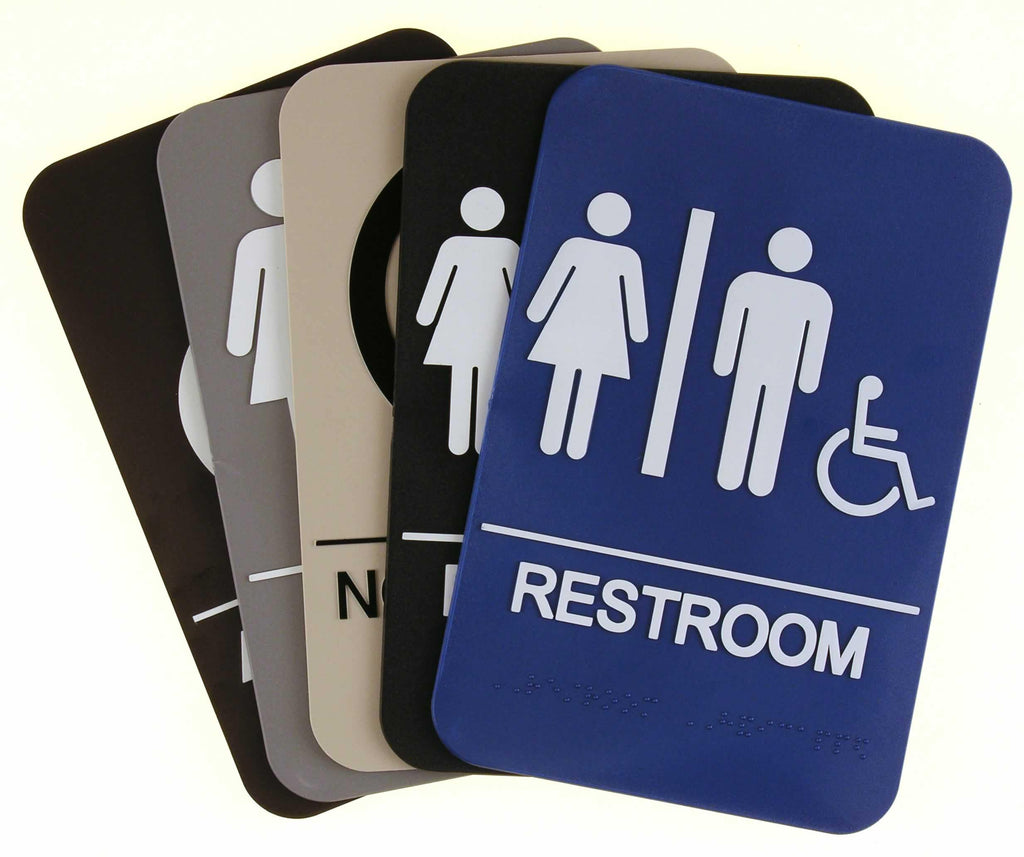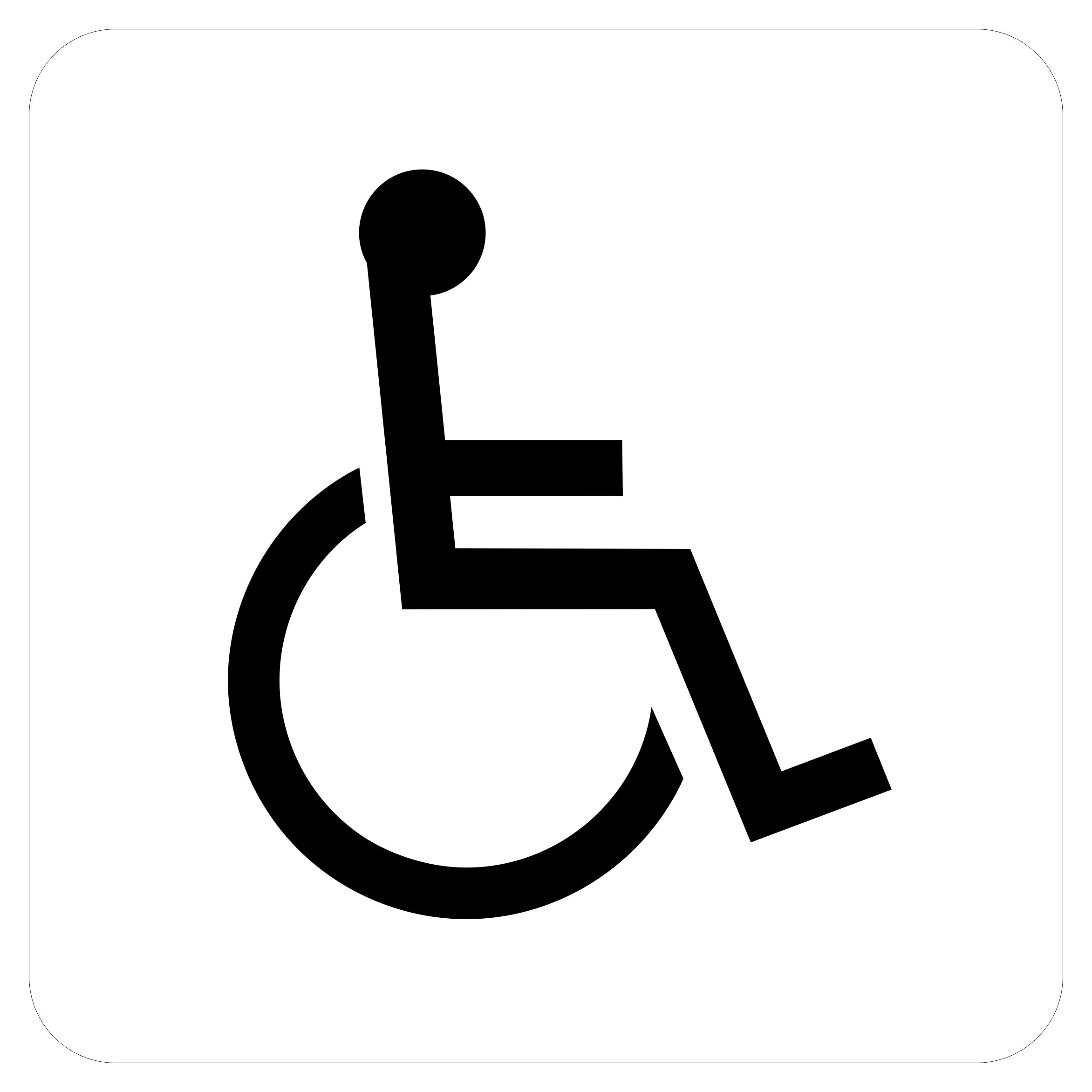Exploring the Key Functions of ADA Indications for Improved Accessibility
In the realm of ease of access, ADA indications act as silent yet powerful allies, guaranteeing that areas are accessible and inclusive for individuals with disabilities. By incorporating Braille and responsive aspects, these indications damage barriers for the visually impaired, while high-contrast color design and legible typefaces deal with diverse visual demands. In addition, their strategic positioning is not arbitrary but rather a computed initiative to assist in smooth navigating. Beyond these functions lies a much deeper narrative about the evolution of inclusivity and the recurring dedication to producing fair areas. What much more could these signs represent in our pursuit of universal ease of access?
Value of ADA Compliance
Guaranteeing compliance with the Americans with Disabilities Act (ADA) is critical for promoting inclusivity and equivalent access in public rooms and work environments. The ADA, established in 1990, mandates that all public facilities, employers, and transport solutions fit people with impairments, ensuring they take pleasure in the very same civil liberties and chances as others. Compliance with ADA requirements not only satisfies lawful responsibilities but also boosts an organization's reputation by showing its dedication to diversity and inclusivity.
One of the vital facets of ADA conformity is the implementation of accessible signs. ADA indicators are created to make certain that individuals with disabilities can conveniently browse through areas and buildings.
Furthermore, adhering to ADA guidelines can mitigate the threat of prospective fines and lawful consequences. Organizations that fail to abide by ADA guidelines may encounter fines or claims, which can be both economically burdensome and damaging to their public photo. Thus, ADA conformity is important to fostering a fair atmosphere for everyone.
Braille and Tactile Components
The unification of Braille and tactile aspects right into ADA signs personifies the principles of access and inclusivity. It is generally put under the matching message on signage to make certain that individuals can access the details without aesthetic support.
Responsive components expand past Braille and consist of raised characters and icons. These parts are made to be noticeable by touch, enabling individuals to recognize area numbers, washrooms, departures, and other important locations. The ADA sets particular guidelines relating to the size, spacing, and placement of these responsive components to maximize readability and make sure uniformity across various atmospheres.

High-Contrast Shade Plans
High-contrast color design play a critical duty in boosting the presence and readability of ADA signage for people with visual impairments. These schemes are crucial as they take full advantage of the difference in light reflectance in between text more tips here and history, guaranteeing that indicators are quickly noticeable, even from a range. The Americans with Disabilities Act (ADA) mandates the use of particular shade contrasts to fit those with minimal vision, making it a critical element of conformity.
The efficacy of high-contrast shades lies in their capacity to stand apart in numerous illumination problems, including poorly lit environments and locations with glare. Normally, dark message on a light history or light message on a dark background is utilized to accomplish optimal contrast. Black message on a white or yellow history provides a plain aesthetic distinction that assists in quick acknowledgment and comprehension.

Legible Fonts and Text Size
When taking into consideration the style of ADA signs, the selection of understandable typefaces and ideal message dimension can not be overstated. The Americans with Disabilities Act (ADA) mandates that fonts must be sans-serif and not italic, oblique, script, very attractive, or of uncommon type.
According to ADA guidelines, the minimal text elevation need to be 5/8 inch, and it must enhance proportionally with viewing range. Uniformity in text dimension contributes to a cohesive aesthetic experience, helping individuals in browsing atmospheres efficiently.
In addition, spacing between letters and lines is indispensable to legibility. Adequate spacing stops characters from appearing crowded, boosting readability. By adhering to these requirements, designers can considerably boost accessibility, ensuring that signage offers its designated objective for all individuals, despite their visual capacities.
Efficient Positioning Techniques
Strategic positioning of ADA signage is crucial for making the most of access and guaranteeing compliance with lawful requirements. Properly positioned indications guide individuals with specials needs effectively, promoting navigating in public spaces. Key considerations consist of proximity, height, and presence. ADA guidelines stipulate that signs ought to be installed at an elevation between 48 to webpage 60 inches from the ground to guarantee they are within the line of view for both standing and seated people. This conventional elevation variety is important for inclusivity, enabling wheelchair users and individuals of differing elevations to accessibility info easily.
In addition, indications should be positioned nearby to the latch side of doors to allow very easy identification before access. Consistency in indicator positioning throughout a facility boosts predictability, minimizing confusion and improving general customer experience.

Conclusion
ADA indications play an essential duty in my response promoting accessibility by integrating attributes that address the requirements of people with handicaps. Integrating Braille and responsive elements guarantees essential information is easily accessible to the aesthetically impaired, while high-contrast color pattern and legible sans-serif fonts enhance presence across numerous lighting conditions. Efficient positioning strategies, such as appropriate installing heights and calculated areas, better help with navigating. These components jointly cultivate a comprehensive setting, emphasizing the relevance of ADA compliance in making sure equal gain access to for all.
In the realm of accessibility, ADA indicators offer as silent yet powerful allies, ensuring that rooms are navigable and comprehensive for people with handicaps. The ADA, enacted in 1990, mandates that all public centers, employers, and transportation solutions accommodate people with handicaps, ensuring they appreciate the same civil liberties and chances as others. ADA Signs. ADA signs are made to make certain that individuals with specials needs can easily browse via spaces and buildings. ADA standards state that signs should be installed at an elevation between 48 to 60 inches from the ground to guarantee they are within the line of sight for both standing and seated people.ADA signs play an essential function in advertising access by integrating attributes that attend to the demands of individuals with impairments